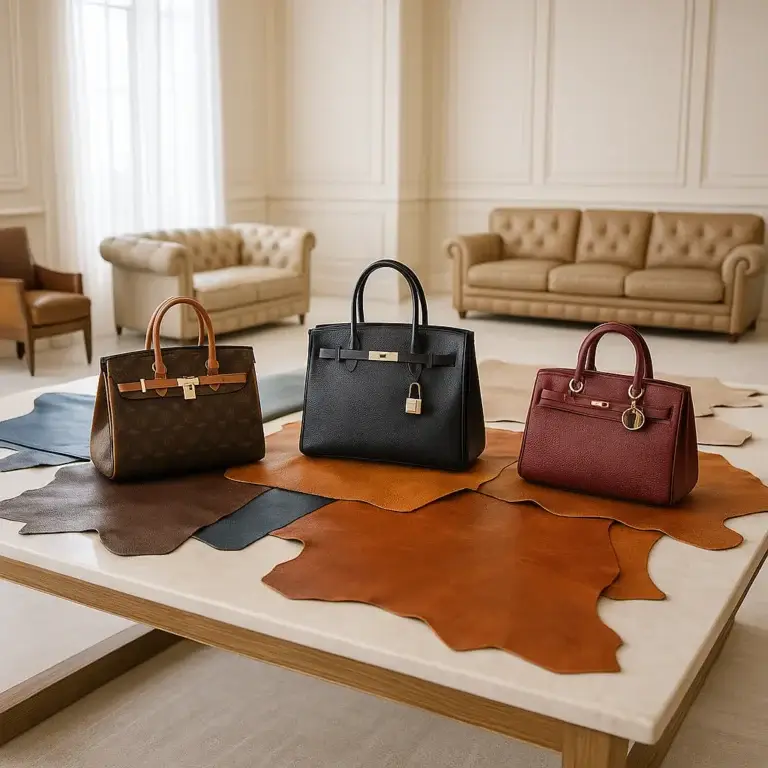
Leather bags are timeless for a reason — they’re durable, stylish, and get better with age. But not all leather is the same. From buttery-soft full-grain to delicate suede, the type of leather your bag is made from affects everything: its texture, durability, how it ages, and how you should care for it.
In this guide, you’ll learn the differences between the most common types of leather used in handbags and how to properly maintain each one.
What it is:
Full-grain leather is the highest-quality leather, taken from the top layer of the hide. It includes all the natural grain and imperfections, which give it character.
Feel and Look:
Thick, durable, slightly textured, and often develops a beautiful patina over time.
Common in:
Luxury handbags, heritage-style bags, investment pieces.
Care Tips:
Good to know:
Full-grain leather can last decades with proper care and actually gets better as it ages.
What it is:
Slightly lower in quality than full-grain, top-grain leather has the top layer sanded down to remove imperfections. It’s often treated and dyed for a more uniform appearance.
Feel and Look:
Smoother, more flexible, and consistent in color and grain.
Common in:
Mid-range to high-end handbags, minimalist designs.
Care Tips:
Good to know:
Top-grain leather is easier to maintain but may not develop the same aged character as full-grain.
What it is:
A catch-all term for any leather that isn’t top- or full-grain. Usually made from lower layers of the hide, it’s heavily processed and often coated with synthetic finishes.
Feel and Look:
Can vary greatly — sometimes soft, sometimes stiff. Often looks overly smooth or shiny.
Common in:
Budget-friendly handbags, fast fashion.
Care Tips:
Good to know:
“Genuine leather” sounds premium but usually indicates a lower-quality product.
What it is:
Suede is made from the underside of the hide, giving it a soft, velvety surface.
Feel and Look:
Soft, matte, with a nap that changes when brushed.
Common in:
Boho or vintage-style bags, clutch purses, fringe handbags.
Care Tips:
Good to know:
Suede is delicate — avoid using in rainy or wet conditions.
What it is:
Nubuck is similar to suede but made from the top grain of the hide, giving it a finer texture and slightly more durability.
Feel and Look:
Velvety like suede but more refined and resilient.
Common in:
Premium handbags, structured designs, high-end leather goods.
Care Tips:
Good to know:
Nubuck looks luxurious but requires careful maintenance to preserve its texture.
What they are:
High-end designer bags may use exotic leathers, which are sourced from non-traditional hides and have distinctive textures.
Care Tips:
Good to know:
These materials require special care and are often harder (and more expensive) to repair if damaged.
Knowing the type of leather your bag is made from isn’t just interesting — it’s essential to caring for it properly. Each leather type has its strengths and vulnerabilities, and understanding those differences can help your bag last longer, look better, and age with grace.
Next time you’re buying a leather handbag — or cleaning one you already own — take a moment to consider the material. With the right care, even delicate leather can remain a wardrobe staple for years.
Your go-to destination for all things handbags and purses — from the latest trends and care tips to leather restoration guides and expert handbag repair shop directories.
Don’t miss our future updates! Get Subscribed Today!
©2025. LeatherBagss.com. All Rights Reserved.